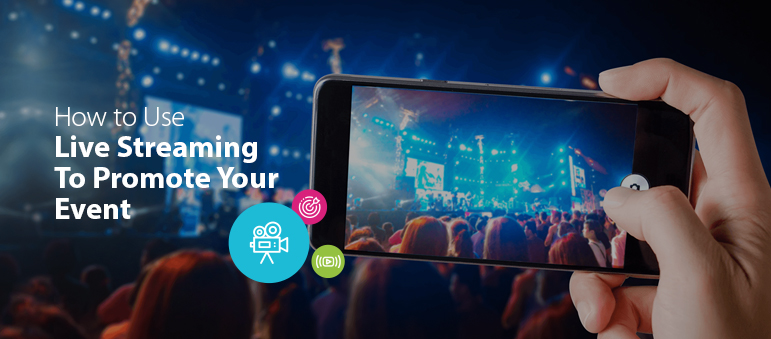How to Use Live Streaming to Promote Your Event
Apr 15,2018
 By: Adriana Lucado
By: Adriana Lucado
Until recently, only major sporting, music or state events have been shown live on TV. The position has changed dramatically in the past few years, and it's now possible for almost any event to be streamed live online. All you need is some basic equipment — and a good internet connection, of course.
Platforms for Live Streaming
You don't have to look far for live-streaming platforms. Here are just a few of the main ones:
- YouTube — For most people the obvious platform for video, YouTube is also effective for live streaming.
- Facebook Live — This has the advantage that it can be tied in with your Facebook account to promote your event to your friends and followers.
- Periscope — Similarly, this is tied into your Twitter account, but has the drawback that the content only remains available for a day.
- UStream — Unlike the other options, which are free, UStream has quite a hefty price tag. On the other hand, it's a platform favored by professionals, from NASA to Nike.
Setting Up Your Live Stream
Depending on which platform you've chosen, you'll need to set it up for streaming live content. In the case of YouTube, for instance, you go to Status and Features and enable Live Events. You'll then create a live event in Video Manager, entering title, descriptions, date and times, and tags. You also have the option of enabling features like live chat, as well as setting recording preferences.
For the recording and streaming itself, the equipment you'll need depends on the quality you want. While it's entirely possible to record your event on a smartphone, for a professional look you really need an HD capable camera, used with a capture card to "translate" the information.
Some Uses for Live Streaming
You can use live streaming in a number of ways to extend your event's reach, both before and during the event. To market the event, for instance, you could hold live-streamed short chats to engage your potential audience. And don't forget to give them an easy route to your registration page.
During the event, you might want to restrict live streaming to certain key events, such as keynote speeches. Besides focusing attention on these segments, it breaks up the stream and makes these events easier to access. You could also organize live Q&A sessions with speakers after their speech.
There are many ways to use live stream to extend the reach of your event. Why not get in touch with us for further advice?


